Arper designers, Altherr Désile Park discuss the inspiration and design of Ghia, a collection of tables new in 2022.
Where did the idea for the Ghia collection come from?
The intention was to create a system of low tables that could fit with most of the Arper seating collections, which are primarily contract, but increasingly residential as well. The concept for the collection was that it should be a passepartout that could bridge different spaces and styles. This meant striking a balance between organic and geometric shapes, and introducing a more haptic and warm aesthetic in line with Arper’s take on material and color. Each table needed to be neutral and flexible, but at the same time have its own sense of presence. Those are two concepts that can be hard to bring together in one single piece, which prompted the development of a system of modular elements.
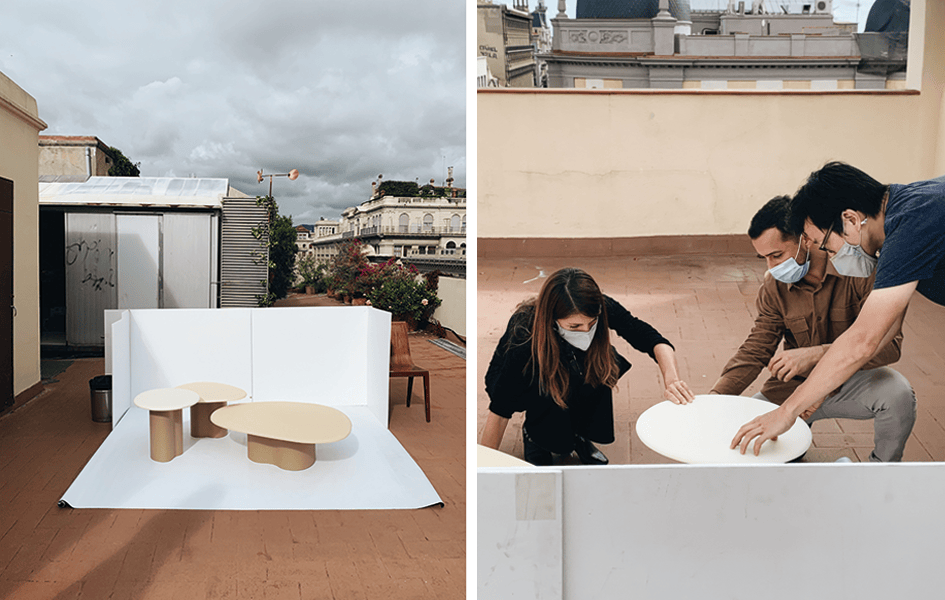
© Courtesy of Studio Altherr Désile Park
What kinds of possibilities does the system enable?
The beauty of Ghia is that it offers many choices within one single system. The idea was to have a set of tops that combine with different bases to adopt distinct charac-teristics. Solid yet soft, the central base is more iconic and sculptural, while the wood legs offer a delicate twist on a table archetype. The range of character is also addressed through the materials and finishes, from a painted MDF top, to wood, to a more expressive terrazzo version. So for example, a set of tables could combine just one base style but play with different colors for the top and bottom. Or, a set of multiple tables might each sit on a distinct base style, but use only one color, giving them a totally different expression. The range of combinations emerge when the tables are displayed as a constellation of smaller objects in varying sizes, bases, and finishes.
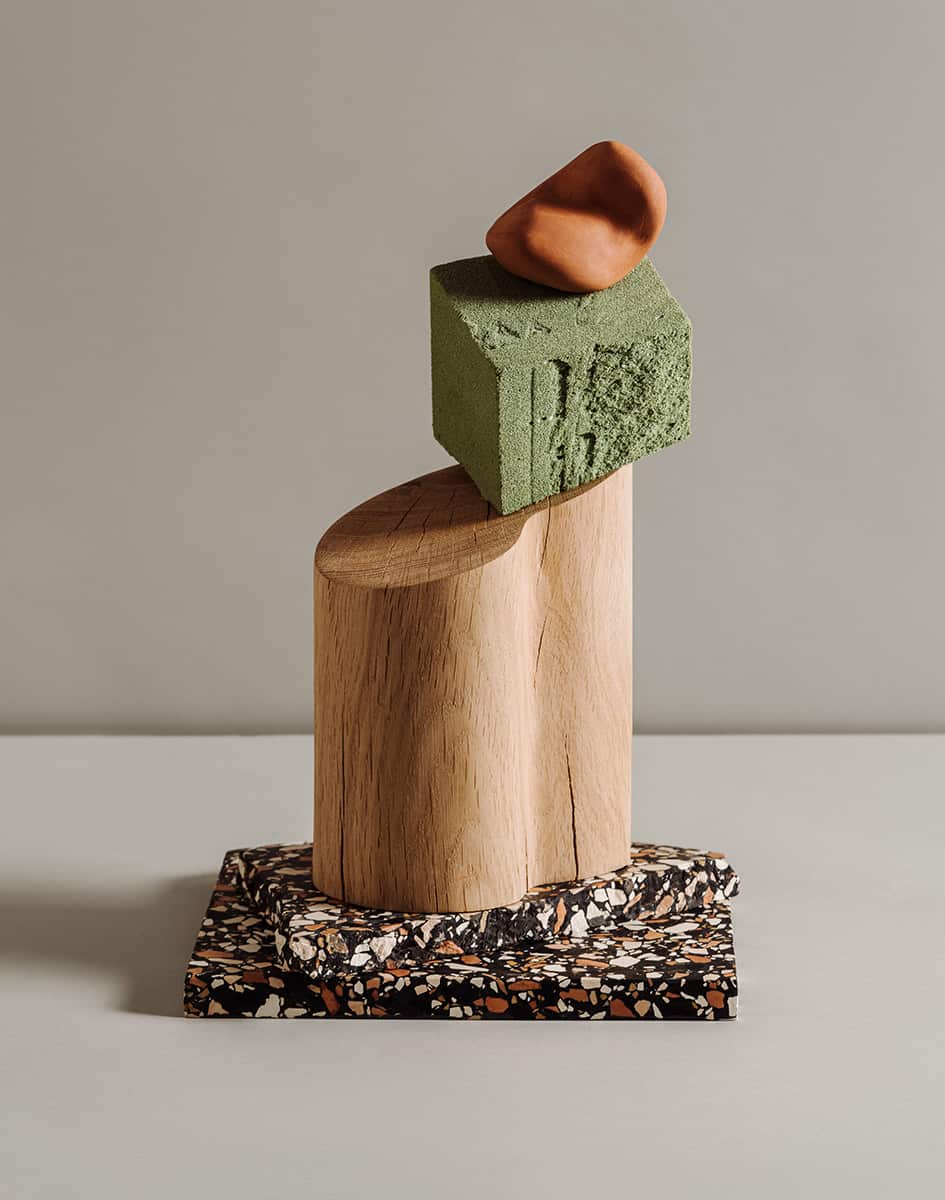
© Ricard Lopez
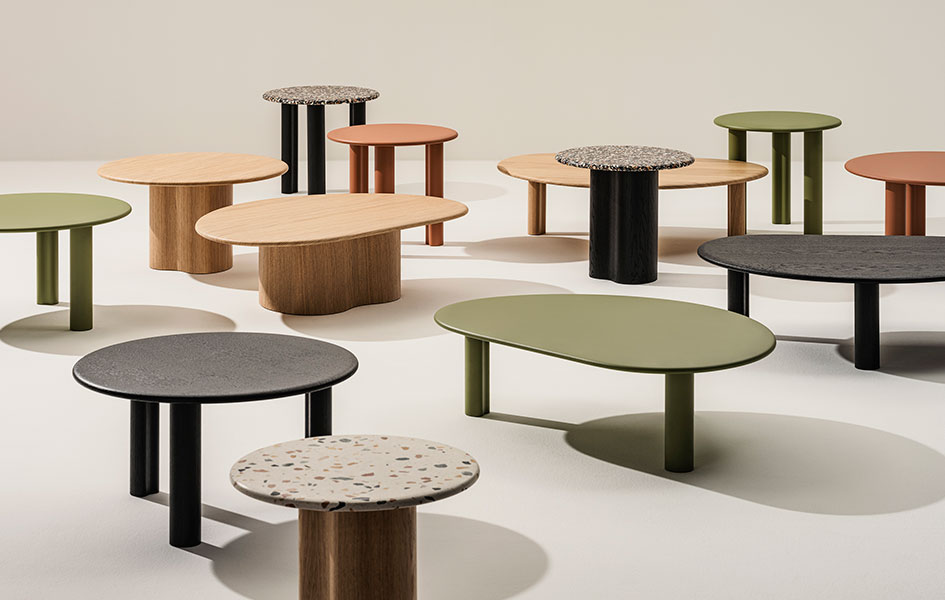
© Salva Lopez
Why is that versatility so important for designers?
In interior design projects, the mix of furniture defines to a large degree what the atmosphere of the space feels like. Designers apply their creativity in the colors they choose and how they combine the different pieces. The look of the Ghia tables can be interpreted from many different angles just by playing with the size, base, and finish options. The system provides opportunities for interior designers to find the combination that works for them—to adapt the piece to the mood and look they want to create for each project. For example, selecting a more quiet and subtle table helps a statement sofa take the focus. Or, for spaces where the sparkle and interest comes from the smaller pieces, choosing the expressive terrazzo finish underscores a certain vibe, whereas using wood creates a different aesthetic, one that’s softer, a bit quieter. Like little islands, the tables help to organize a space, from a small and flexible moment next to a lounge chair, to a bigger and more solid landscape in the center with the other furniture organized around it.
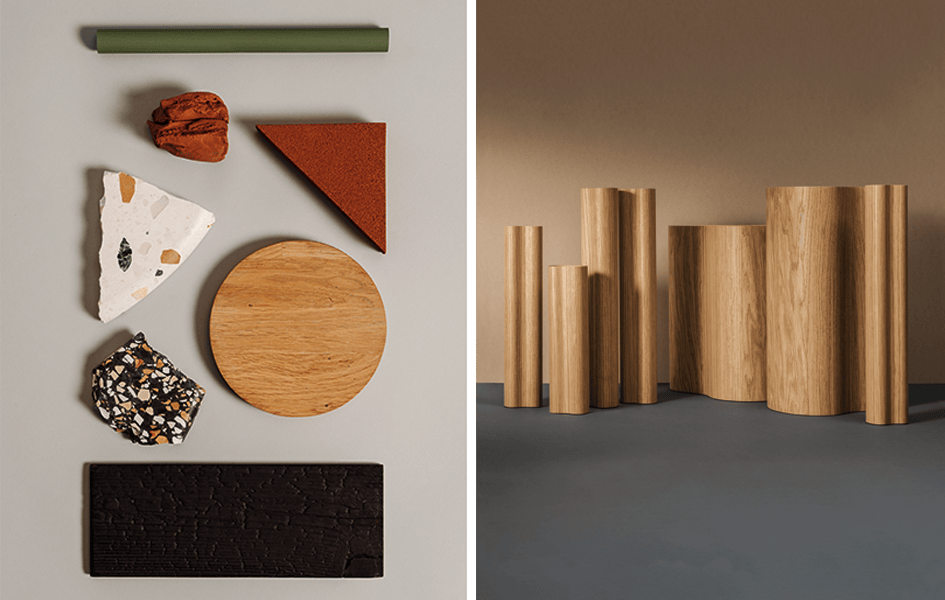
© Ricard Lopez
How does Ghia work across different settings, and with Arper’s other collections?
Given the small sizes and many possible interpretations, we imagine this collection to be used seamlessly from a bedside table to a living room, to public spaces like a lobby, a coworking suite, or a hotel—basically in all situations where you find lounge furniture. The system is flexible enough to work with most of Arper’s seating collections.
Creating balance seems like an important aspect of the design.
This collection is all about balance. Our idea was that the table would work as a bridge between organic lounge pieces and others that are more formal or inspired by an industrial language. To achieve that, we worked on very carefully balancing geometric and organic elements. The table can be more in the forefront, or it can fade into the background. It can be subtle, or can be sculptural. It’s in itself a balance, but it’s also in balance with other collections in Arper’s catalog. And last but not least, it’s in balance with what we expect from spaces. The tables speak to a soft way to relate with the interior environment; they inspire a relaxed sense of wellbeing.
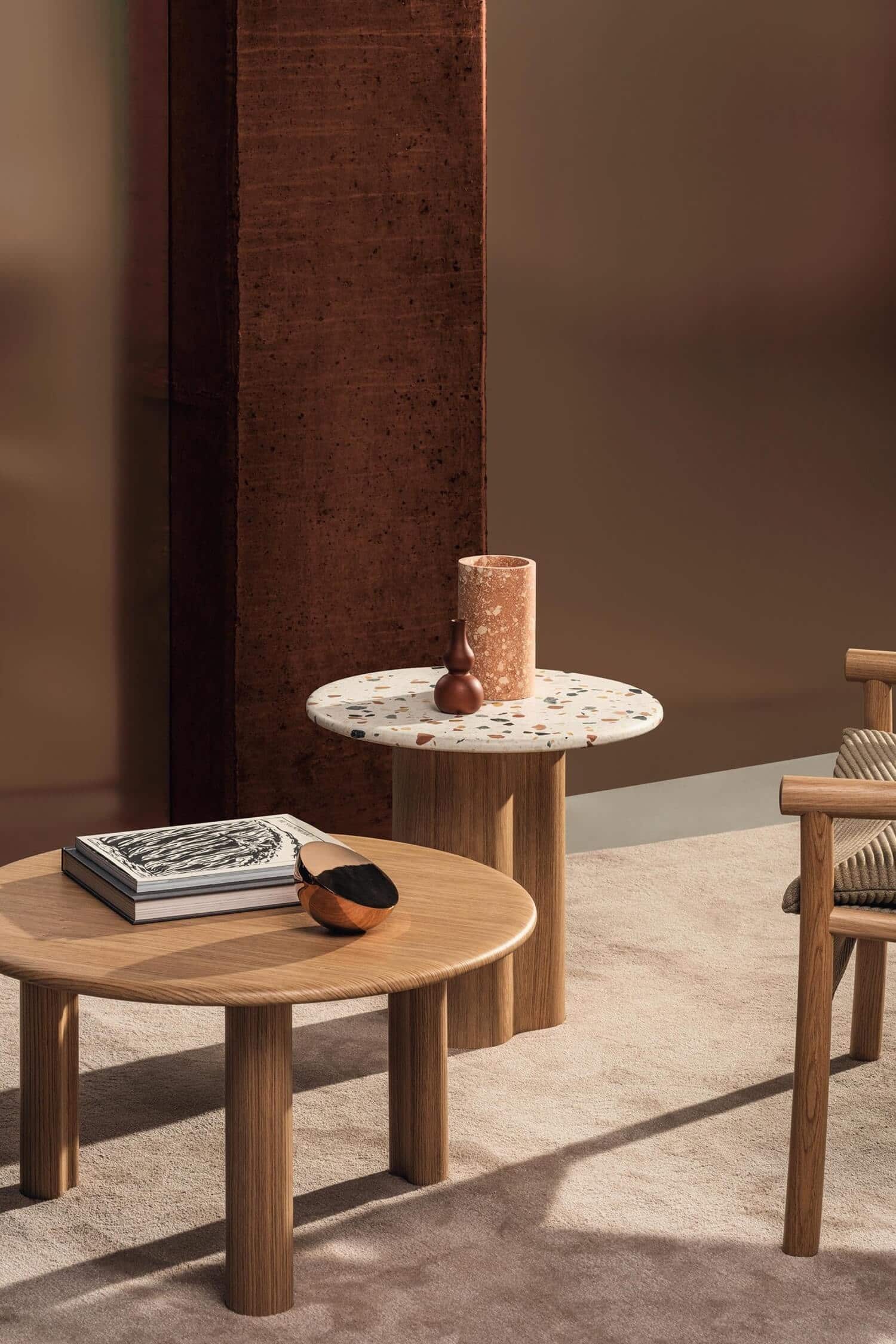
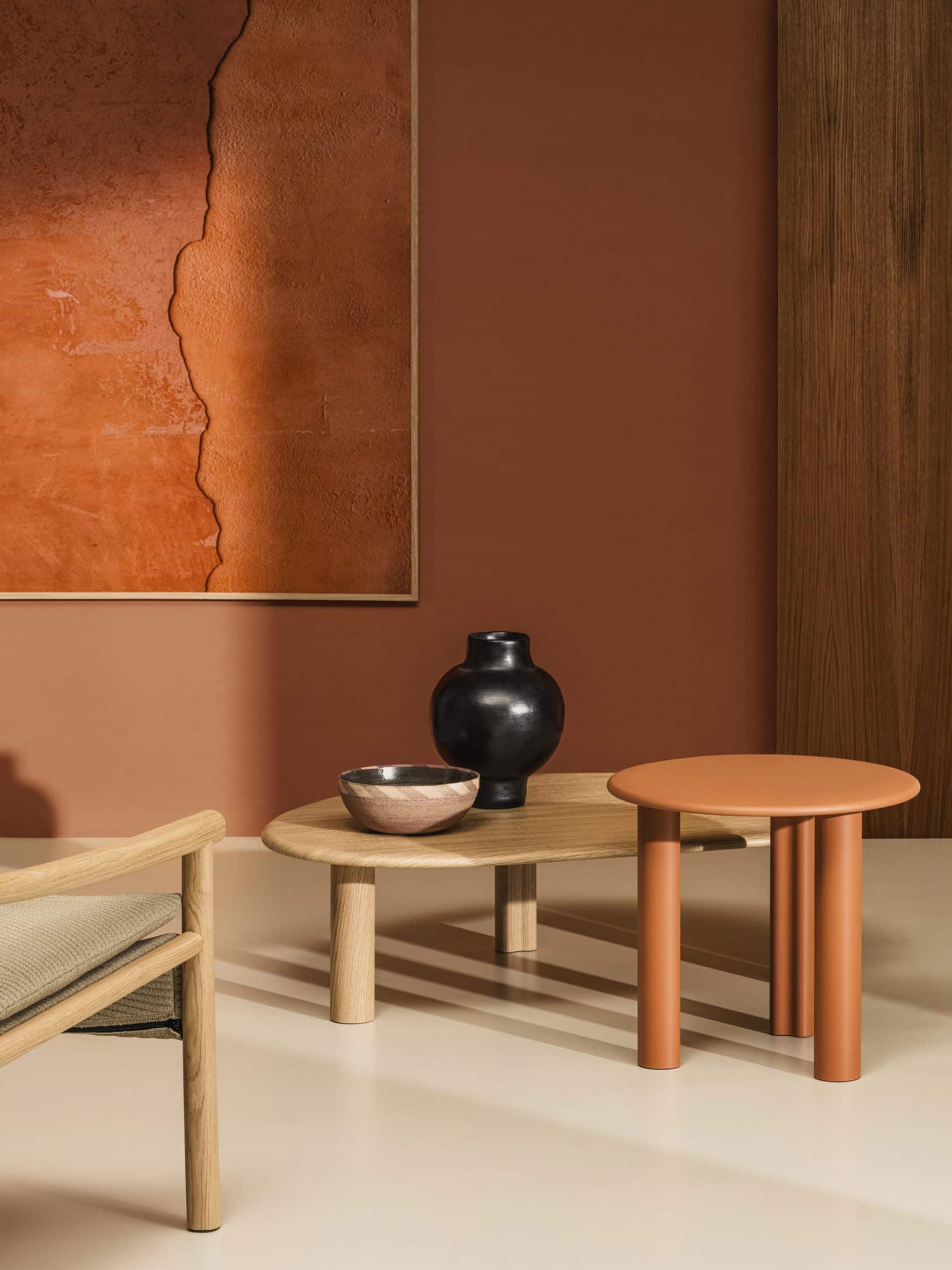
How did these ideas of warmth and flexibility inform the materials palette?
The materials and colors are carefully designed to work together to bring more warmth and materiality into the offering. Working with wood was a central part in the beginning. The materials started with oak in natural colors. Then we added the terrazzo, choosing one light and one dark version that are not conservative, but not super avantgarde either. We looked for terrazzo that is timeless, tasteful, elegant, warm, and that would link with the wood. And then the color palette also had to match with these existing materials. Each color had to have a presence on its own, but at the same time combine easily with the other materials. For this collection, we really felt that the colors should embody what wood and terrazzo do in material. We chose a black finish that still shows some of the wood grain, as well as a moss green and a clay paint, both inspired by the colors and textures of the natural world.
Were there any sustainability considerations that shaped the design?
The project’s strong focus on sustainability and the ongoing global supply shortages prompted our renewed interest in local resources. Looking at materials that were available close by and sustainable, we arrived at terrazzo, one of the oldest recycling techniques. It was actually invented in the Veneto region, where Arper comes from, in the 16th century. A modular design system also enables us to be very efficient in terms of storage, because each of the pieces builds several products, which requires manufacturing and storing less stock. This is really crucial not just for the efficiency, but from a sustainability point of view for Arper.
Designer profile
Altherr Désile Park is the evolution of the long-standing Barcelona-based studio Lievore Altherr. The studio specializes in product design & development, strategic consulting, creative direction, art direction, and ephemeral architecture for internationally recognized design companies.
Their approach develops projects using an established strategy: a creative concept integrating product design and its communication. This holistic approach, humanist character, and the search for the essential in their projects – combined with a sensibility that transmits harmony and balance – characterize the designs of Altherr Désile Park.
Get in touch
Has this article peaked your interest? Please contact us with the specific needs of your project and let us help you find what you’re looking for.
info@ufl.co.nz
+64 9 828 1000
Showroom Open:
Monday to Friday 9am-5pm
